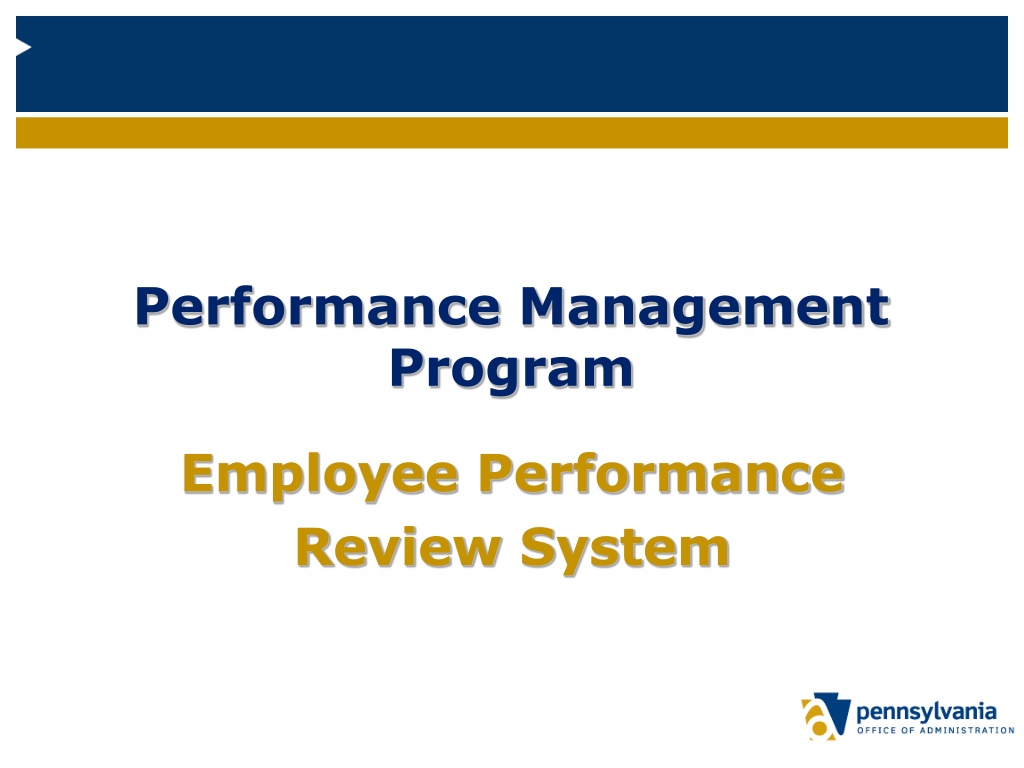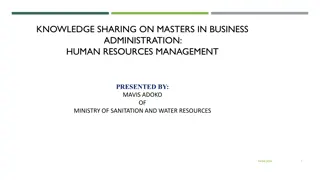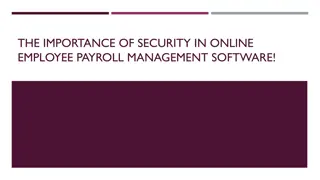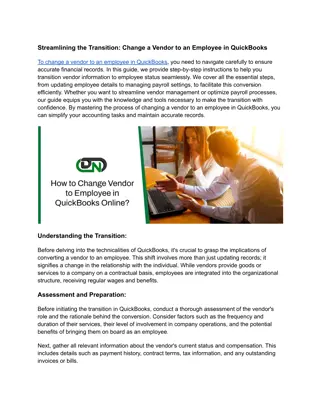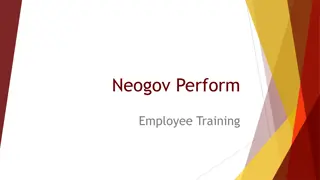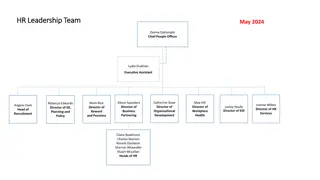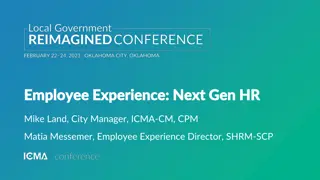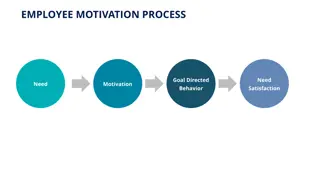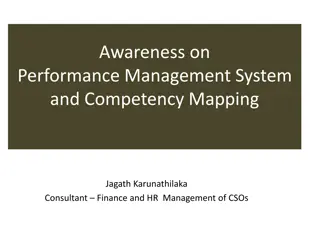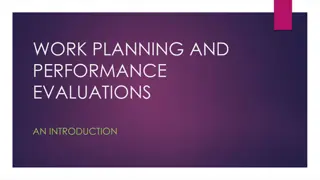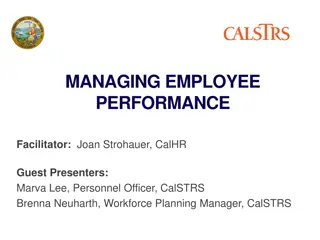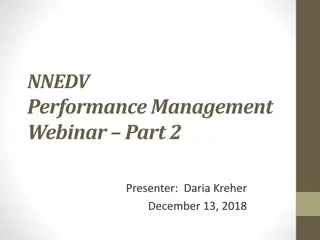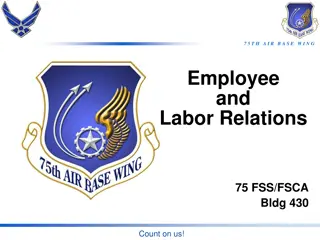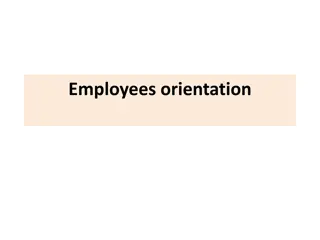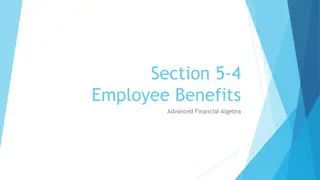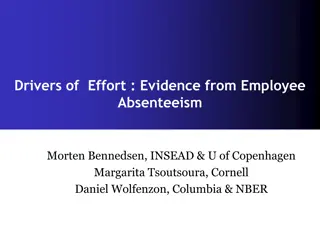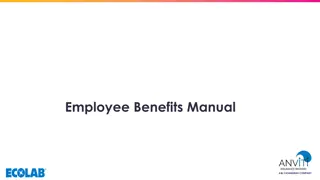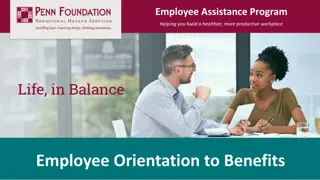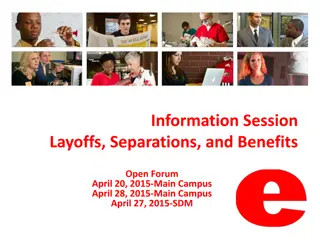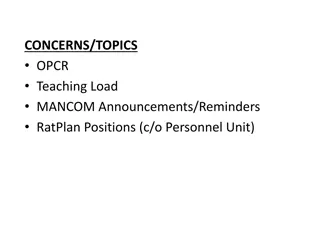Comprehensive Employee Performance Review System
This program covers various aspects of managing employee performance, including introductions, agenda, the big picture of performance management, managing performance knowledge and skills, continual performance management process, activities, purposes of EPR, and the value of EPR in enhancing organizational effectiveness.
Download Presentation

Please find below an Image/Link to download the presentation.
The content on the website is provided AS IS for your information and personal use only. It may not be sold, licensed, or shared on other websites without obtaining consent from the author.If you encounter any issues during the download, it is possible that the publisher has removed the file from their server.
You are allowed to download the files provided on this website for personal or commercial use, subject to the condition that they are used lawfully. All files are the property of their respective owners.
The content on the website is provided AS IS for your information and personal use only. It may not be sold, licensed, or shared on other websites without obtaining consent from the author.
E N D
Presentation Transcript
Performance Management Program Employee Performance Review System
Introductions Name and Agency How long worked as a supervisor How many employees do you rate or review Questions, issues, or concerns on EPR
Agenda for Today Managing Performance and Role of Performance Appraisal Developing Standards Management Directive 540.7 (Amended) Writing Comments Identifying Employee Strengths and Opportunities for Development Conducting the EPR Interview
The Big Picture Performance Managment Long term Standards & expectations linked to operation objectives Performance is planned, motivated, and coached Process emphasized Results & competencies are essentials Conducted by supervisors continuously Performance Appraisal Short term Standards & expectations objectively identified Performance is judged after the fact Form emphasized Results emphasized & measured Housed in HR Office
Managing Performance Knowledge and Skills are not present: Knowledge and Skills are present: Motivation Coaching Feedback / EPRs Discipline SEAP Training Development Preceptorship Mentorship
Performance Management Continual process, not an isolated annual event Enhances performance Plan Implement Evaluate Plan Do Develop Review
Purpose of EPR Bidding on vacancies Interviewer review Permanent status Supporting documentation EPR grievances / CS appeals Furlough of management and most non-represented, non-classified employees
Value of EPR Opportunity to praise Coach for improvement Commend exceptional work Establish and communicate responsibilities, priorities, and accountability Ensure organizational effectiveness
Performance Management Position Description & Essential Job Functions What is to be done? How well it is to be done? Performance Standards & Expectations How well was it done? Performance Evaluation Communication? Effective Communication
Plan Update Job Description Establish & Communicate Standards Standards conveyed in writing Create / review EDP Plan Do Develop Review
Standards Are written for the satisfactory rating category and for the rating period unless specifically stated otherwise within the standard SMART Standards Specific Measurable Achievable Realistic Time-bound See EPR Factor Links 4
Standards Can be in various formats: Expectations, objectives, duties Goals, priorities, responsibilities Job duties correlated to expected results Job factors correlated with job standards Describe specific and measurable performance at the satisfactory level How much (quantity) How well (quality, results) By when (timeliness) At what cost (cost effectiveness)
Activity Occasionally Often Sometimes Frequently
Job Factor Links Job Factor Links provide expanded explanations of the various issues and behaviors that are included in assessing and measuring each job factor. You can access an online version of the 363L form and Links on the WPD website.
Improve Vague Standards 1. Review seven sample standards against criteria & rewrite them so that they meet the first three criteria for standards: Achievable Measurable Observable 2. Identify which EPR factor each standard is an example of (Job Knowledge, Work Habits, etc.) You can make up the standards or use those you may be familiar with.
Factor Method Ensure position description is current Review performance factors with employee Develop performance standards and expectations for each factor Determine under which factor each standard/expectation falls Work with employee to achieve agreement on standards and how they relate to factors 1. 2. 3. 4. 5.
Activity Developing Standards Write down a duty Write down three supportive activities Write standards for each supportive activity Indicate the related job factor(s)
Job Factors Job knowledge / skills Work results Communications Initiative / problem solving Interpersonal relations / EEO Work habits Supervision / management
Weighting Standards & Factors Discuss with employee Write weight/value on form Percentage = value to whole job Refer to weights during progress review Document weighting rationale in written comments
Implement Observe Coach & Mentor Informal feedback Plan Do Develop Review
Tracking Standards & Performance Spot check Employee keeps log/record Activities file (supervisor) Activities reports By complaint
Informal Review Formal Results Good job, Fran. You completed the monthly status report ahead of deadline it is accurate and thorough. One improvement would be to include the interim program expense data. The archive folder has examples of how this was presented in the past, and you can get the data from the procurement bureau here is the name and phone number of our point of contact. Do you have any questions or comments about the report? CLEAR POSITIVE SPECIFIC
Activity MANAGEMENT DIRECTIVE Commonwealth of Pennsylvania Governor's Office Subject: Performance Management Program Number: 540.7 Amended Date: May 2, 2011 By Direction of: Kelly Powell Logan, Secretary of Administration This directive establishes policy, responsibilities, and procedures for the Performance Management Program for all commonwealth employees.
Evaluate Formal Feedback Progress Review Annual Reviews Interim Reviews Probationary Reviews 363L Primary Evaluative Tool Review Job Description & EDP Plan Do Develop Review
Types of Formal Reviews Annual Progress Review Semi-Probationary Review (3 mo) Semi-Annual Review (6 mo) Also called Mid-Period Interim Probationary New Hire Promotion
Interim Reviews Should be prepared during the rating cycle if: Employee's rater changes Employee transfers or is promoted Job significantly changes, resulting in new standards but not a change in classification Employee is assigned to work out of classification for an extended period of time For other appropriate reasons as determined by the rater
Interim Reviews Must be prepared during the rating cycle if disciplinary action is initiated due to continued unsatisfactory performance (not be the official notification of the adverse action) Consider interim when completing annual or probationary rating For non-civil service and non-union represented or SMS employees, an interim review should be completed approximately six months following appointment, transfer, or promotion into the position
Probationary Review Assess the employee s fitness for continuation in the position Permanent Civil Service status granted only after a satisfactory probationary EPR is submitted to HR: Your services as a(n) (job title) have been satisfactory. I recommend that you attain regular civil service status. Due to HR by last day of probationary period If not timely or properly completed, employee s personnel record will reflect probationary civil service status (not automatic flip to regular status) for 18 mos., then regular status is granted
Hypothetical EPR Timeline Evaluation as part of the annual FY EPR cycle Period begins on the employee s start date (Oct. 15) Close-out is June 30 Probationary review April 15 Interim (change of rater) on May 3 Start Date: Oct 15 End of Prob: April 15 Annual: Jun 30 Semi - Prob: Jan 15 Interim: May 3 Rater
Other Considerations Employee refuses to sign EPR No electronic signatures on official EPR Employees may write rebuttals, offer documentation Employees are afforded 5-days to sign, submit comments
EPR Grievances / CS Appeals EPR may be grieved if: Supervisor who completed EPR wasn t familiar with employee s job performance (or rater was not available) Process was improper or incorrect EPR used to implement discipline EPR used to notify employee of future discipline Employee alleges discrimination in rating
Writing Comments Support level of the rating Consistent with level of the rating Define problem areas for development Provide guidance for improvement Include job-related recognitions Substantive
All Ratings Require Comments Outstanding Commendable Satisfactory Needs Improvement Unsatisfactory Performance Improvement Plan is: Encouraged if any factor is rated at Needs Improvement or Unsatisfactory Mandatory if overall rating is Needs Improvement or Unsatisfactory
Writing Comments ??? Since the last evaluation, he has reached rock bottom and started to dig. His men would follow him anywhere, but only out of morbid curiosity. This employee is really not so much of a has- been, but more of a definite won t be. Takes him 1 hours to watch 60 Minutes. This employee should go far and the sooner he starts, the better. Wheel is turning but the hamster is dead. If brains were taxed, he d get a rebate.
Writing Comments Attitude = Vague Emotional Subjective Behavior = Specific Observable Objective
Activity Indicate whether each statement describes an Attitude (A) or a Behavior (B) Hint: Four B, Six A Attitudinal: 1, 5, 6, 7, 8, 9
Writing Comments & Feedback Clear and concise Elements for substantial comments: 1. Select job activity 2. Indicate the degree 3. Describe the conditions 4. Suggest an influential factor 5. Give an example 6. Point out trends 7. Show consequences, results, outcomes
Identifying Employee Strengths Identify positive qualities, attributes, behaviors, knowledge, and skills Recognize/commend proficiency Maximize contribution to organization by involving employee in assignments requiring those abilities Identify potential mentors Seek input from employee, reviewing officer, and others who work with/for employee
Develop Build on strengths ID areas for improvment Learning need 1st Developmental opportunities to fulfill need Plan Do Develop Review
Opportunities for Development Identify job factors that were rated below satisfactory. What problem existed? Identify job factors rated at satisfactory or above; why was the rating not higher? What knowledge, skills, ability are needed by employee at the next level up?
Opportunities for Development Consider: Mandatory training requirements Improving current job performance Preparation for future job assignments Enriching the work experience
Learning Need The employee needs to learn (knowledge, skill) to (level, amount) for (special or specific criteria, circumstances, or duties). The employee needs to learn Access software to an intermediate level for use on quarterly database reports. The employee needs to learn how to develop a lesson plan for a one-day workshop for groups of 15-20 participants.
Developmental Options Direct Reading Problem-solving Off-site Assignments Preceptorship Meetings Delegation Mentoring Job Enrichment Rotational Assignments On-The-Job Training In-service Training Out Service Training Self-instructional training
Activity Preparing an Employee Development Plan Prepare an Employee Development Plan for the specific employee scenario for your group Determine the learning needs and then complete the rest of the employee development plan worksheet 25
Continuous Learning Meet with employee after developmental option has been completed Give employee opportunity to use what they have learned Give rewards for learning and using new knowledge and skills
The EPR Interview Preparation is the key Conducting the interview Opportunities reward, improve, plan Occurs twice a year but a continuous process Begins and ends with 2-way communication between supervisor and employee
Activity Effective EPR Interview Count off by 3 s to form three groups On a flipchart, each group lists items that have been successful for them for one of the three phases of the effective EPR interview: 1. Preparation 2. Appraisal Meeting 3. Follow Through
Video Continuous Performance Appraisal: Coaching is the Key 1. Preparation 2. Appraisal Meeting 3. Follow Through What was different between your exercise discussions and what you learned in the video? 28
Questions. and review of issues or concerns
